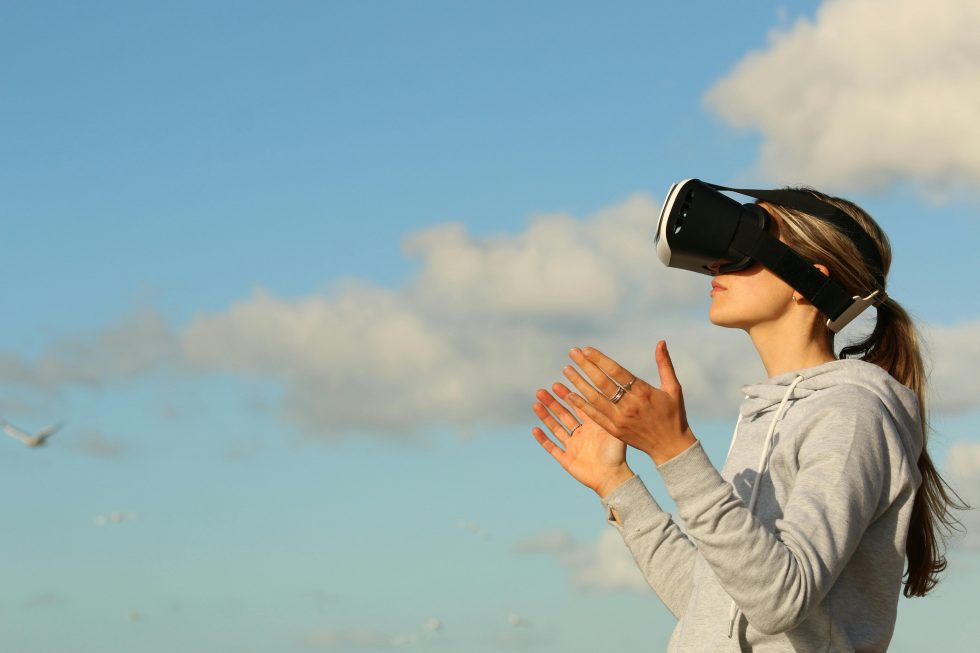
The original version of this article was published in Italian by the same author on 25 March 2025.
The relationship between media and metaverse in the consumer age is not one of the simplest. Most of all in Italy. On one side, there is a great wish to innovate, attracting a target always younger, like GenZ. On another side, we have to deal with costs.
We can not say that nobody tried: some realities, not many, tried to do it. In particular during 2020-2022, when the metaverse boomed and it seemed that every company, large or small, public or private, would have to have an own virtual space to survive after the Pandemic.
Today we know that, in reality, all this emergency was driven by fear. Fear of being forgotten, of no longer counting or not being recognized. In 2025 the situation is different: who’s now in the metaverse? And what do the media do with the virtual world? Mediatrends talked about it with Claudio Conti, senior researcher of the Extended Reality & Metaverse Observatory of Politecnico in Milan.

Claudio Conti, senior researcher Politecnic of Milan.
An inclusion instrument
Let’s take a step back. It’s 2022 and the sanitary emergency has just ended. To be online for brands, institutions and representatives – publics and privates – seemed to be essential to overcome the dramatic period and carry on their activities. “At that time, there was a large opening to the metaverse world. We studied it, we tried to know how to use it. Between 2022 and 2023, also media came into the extended reality,” Conti said.
In that period, curiosity and the desire to go on towards innovation and the future was the driving force. “The media understood that virtual worlds could represent a new communication channel,” the researcher said.
In that way, TV began to speak a new language. “I remember some examples, like the Milan-Fiorentina Serie A match broadcast by Lega Calcio in the metaverse, which allowed users to enjoy that content with a more immersive perspective.” And the new virtual world was not simply seen as a “channel.”
“In that period, it allowed a wider target of people, like the residents of some countries in the Middle East and Africa who normally cannot access this content due to the blocks imposed by regulations, who had the possibility to watch some matches live. For them it was an exceptional event.”

A screenshot of Milan-Fiorentina in the metaverse.
In this case, therefore, augmented reality becomes a new space of inclusion, which welcomes new users, who try new experiences, different from those they are used to. And also publishing came in augmented reality.
Mass media and metaverse
“Some publishing entities in the metaverse have developed a virtual space with multiple points of view – Conti said – I’m thinking of Red-Eye, a magazine that in September 2022 launched a fashion-themed editorial project accessible in the virtual world of Spatial. Here, the user can move, interact, and explore the various proposed contents.”
RAI has also tested augmented reality.
“RAI Cinema, in ’22, launched a 3D exhibition on Diabolik that included a series of games and the creation of a themed avatar. If the users completed the challenge, they could access the viewing of unpublished content created during the making of the first Diabolik film,” the researcher said. But not only that.
With the support of AI, RAI revisited Cabiria, the first Italian epic film. A linear short film followed by an immersive one, created with a 3D graphic Unreal Engine and a combination of artificial intelligence tools. The immersive version is available in the CineVR rooms of the National Museum of Cinema and on the RAI Cinema VR application,” he said.
And the Italian Radio Television has also launched the exhibition “NFT Cinema. Digital Storytelling and Metaverse” in the virtual space of The Nemesis, free and easily accessible from PC or smartphone. An exhibition on NFTs and cinema in the metaverse to testify how digital can represent an opportunity for film production. And in this case, another central aspect comes into play when talking about the metaverse: gamification, that is, the ability to attract users through play.
Education in the metaverse
At the heart of the gamification idea there is also another project launched by RAI, DanteVerse, which with educational purposes entertains the very young in the world of Dante’s Divine Comedy.
“In this case, thanks to an immersive gaming experience, the user learns and acquires more knowledge about Dante’s Comedy. The concepts of gamification and education blend together.”
The metaverse is not used, clearly, only by the media, on the contrary. Retailers and the tourism sector are the ones primarily present in augmented reality.
“There, you have the opportunity to showcase events and fairs entirely in digital form, as, for example, Swiss Virtual Expo did, which launched the first digital fair promoted in the Swiss Confederation. An unprecedented event, lasting a year, in which companies from Ticino, Switzerland and not only presented themselves to potential customers,” Conti said.
In this case, augmented reality also becomes an additional opportunity to publicize a brand, launch an event and engage the potential consumer.
Towards new frontiers
In Italy, since 2020, the Observatory has counted 482 Extended Reality projects, of which 301 are B2C and 181 are B2B/B2E projects. Of these, 71 are within virtual worlds.
In 2023, were realized 74 new B2C projects, of which 22% in education, with the creation of virtual classrooms for training and student lessons developed by different universities, 18% in retail, and another 18% in tourism.
“On the virtual worlds, there are a myriad of artists who have held concerts or released songs,” Conti said. “Among the first, Travis Scott with a concert on Fortnite, then Snoop Dogg, and even Italian artists like Marco Mengoni and Achille Lauro have passed through there.”
Education, gamification, and engagement are the trends pursued in the virtual world. “It’s a more engaging model, even from a neuroscientific standpoint, compared to reading content,” the researcher said.
Future trends
Speaking of the future, Conti discussed what possible scenarios the publishing industry might face. “It must be considered that, at least for the moment, we are at an initial level in some aspects,” he said.
“Many virtual worlds are now accessed not only with TV but also from the PC, and this limits the fruition of a new experience. The first step towards the future is an even more massive diffusion of viewers.”
And right here lies the biggest obstacle so far: the cost of these viewers that would allow for 360-degree enjoyment of augmented reality. “The one launched by Apple costs 3,500 dollars, although, according to rumors, the Cupertino big tech is working on a more affordable model. Meta is also at work on lower-cost viewers. I believe this is the priority.”
But it’s not just a matter of cost. “Work must also be done on the ergonomic side: the viewers of the future will have to be lighter and less invasive.”

Photo: Pexels.
We are already talking about future.
“The Metallica concert on Apple Vision Pro gave some users the opportunity to enjoy the concert as if they were actually immersed in that space: they could get closer to the singers, touch them. The evolution could therefore be the creation of an avatar of the users themselves interacting with other avatars in the virtual world, towards increasingly immersive experiences.”
Future also means integration.
“We must not think of separate worlds, but of integrating our proposals also through this channel, so that it becomes a new touchboard – concludes the researcher – For example, to guarantee the users a prize in the metaverse that they could then spend in the physical store creates a connection between virtual and physical world. And above all, we must not forget that GenZ, and therefore the users of the future, passes through here. I believe that if the publishing industry wants to reach them, it must also be focused on this new channel.”








